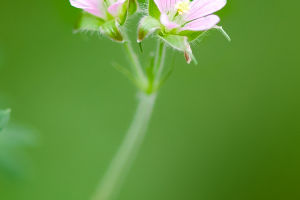The Clivia orchid is native to southern South Africa, where it grows as a perennial herb. It typically flowers for up to 30-50 days, mainly in winter and spring, from New Year's Day to the Spring Festival.
This plant prefers semi-shade conditions and likes cool temperatures between 15-25 ℃.
If the temperature drops below 5 ℃, the plant will stop growing. The Clivia also require well-drained and moist soil, so it's important to avoid dry environments. With its high ornamental value, this plant is a popular choice for indoor decoration.
As for monarchs, these plants also prefer semi-shade conditions and are phototropic. If kept indoors for extended periods, their leaves will grow towards the direction of the sun.
To prevent the plant from growing unevenly, it's necessary to turn the pot every other week. When it comes to watering monarchs, it's best to use living water, magnetized water, natural precipitation, well water, or tap water in that order of preference.
Monarchs have fleshy roots that are sensitive to water damage.
Additionally, their leaves have a waxy layer that slows down transpiration and evaporation of water during the winter season. Therefore, watering should not be excessive, and it's best to fertilize the plant before watering.
The potting soil should be kept moist but not too wet or dry. Water thoroughly and increase watering after buds emerge.
When propagating the Clivia, it's best to wait until the fruit has no more ornamental value. During the process of plant division, it's important to avoid damaging the root system. To encourage better blooming, it's recommended to choose a small pot, about 12 centimeters in diameter, for monarchs.
This plant's root system can cause the soil to surge upwards during the growth process, so it's not necessary to fill the pot with too much soil, typically around 1/7th of the pot's volume. Monarchs prefer cool temperatures, and the ideal growing temperature ranges from 18-22 ℃.
They don't do well in high humidity or high temperatures, and in the winter, it's important to maintain a minimum temperature of 5-8℃ to prevent the plant from freezing.
Monarchs have a fleshy root system that's more drought-resistant than other plants. They require infrequent watering and it's best to avoid direct watering of the leaves. If the humidity is very low, it's okay to spray the plant occasionally.
Normally, wait until the surface layer of the potting soil is about 1-2 cm deep and dry before watering. In winter, wait until the potting soil is 80% dry before watering again. If monarchs lack sufficient nutrients, they can experience stunted growth or yellowing leaves.
Pests and diseases can also cause yellowing. It's important to use a method called "root fertilization" to fertilize the plant. This method involves making up for any nutrient deficiencies in the soil, which can help the plant grow faster and produce healthier leaves and flowers.
Fertilizing outside the roots means spraying a diluted solution of fertilizer directly on the plant's foliage with a fogger. This allows the nutrients to penetrate through the leaf epidermal cells and stomata into the leaf tissues and then transported to the whole plant.
The Clivia and monarchs are two plants that require specific care to thrive. By providing the right amount of water, sunlight, and nutrients, you can enjoy the beauty of these plants in your home or garden.


